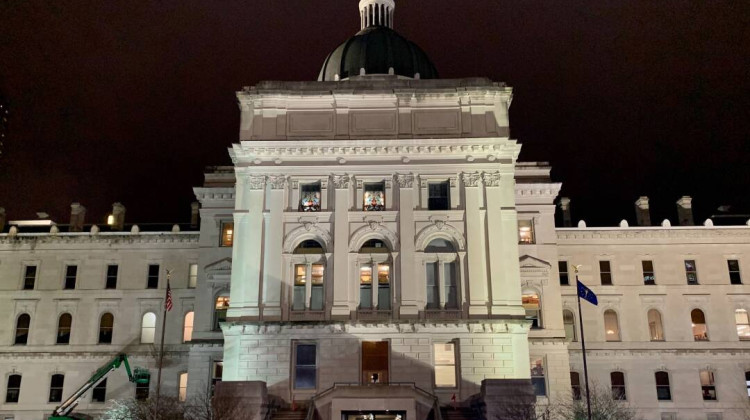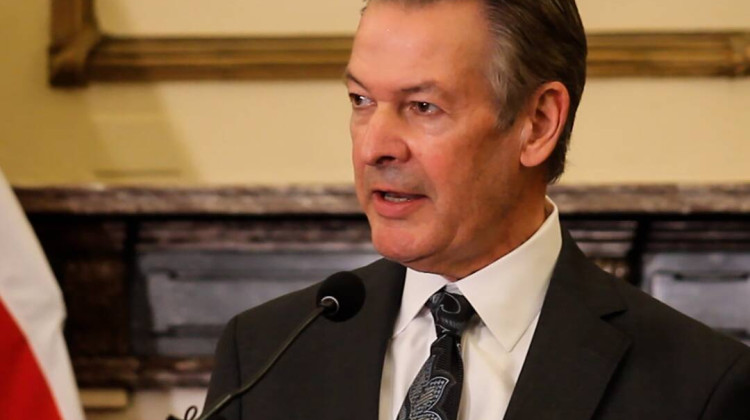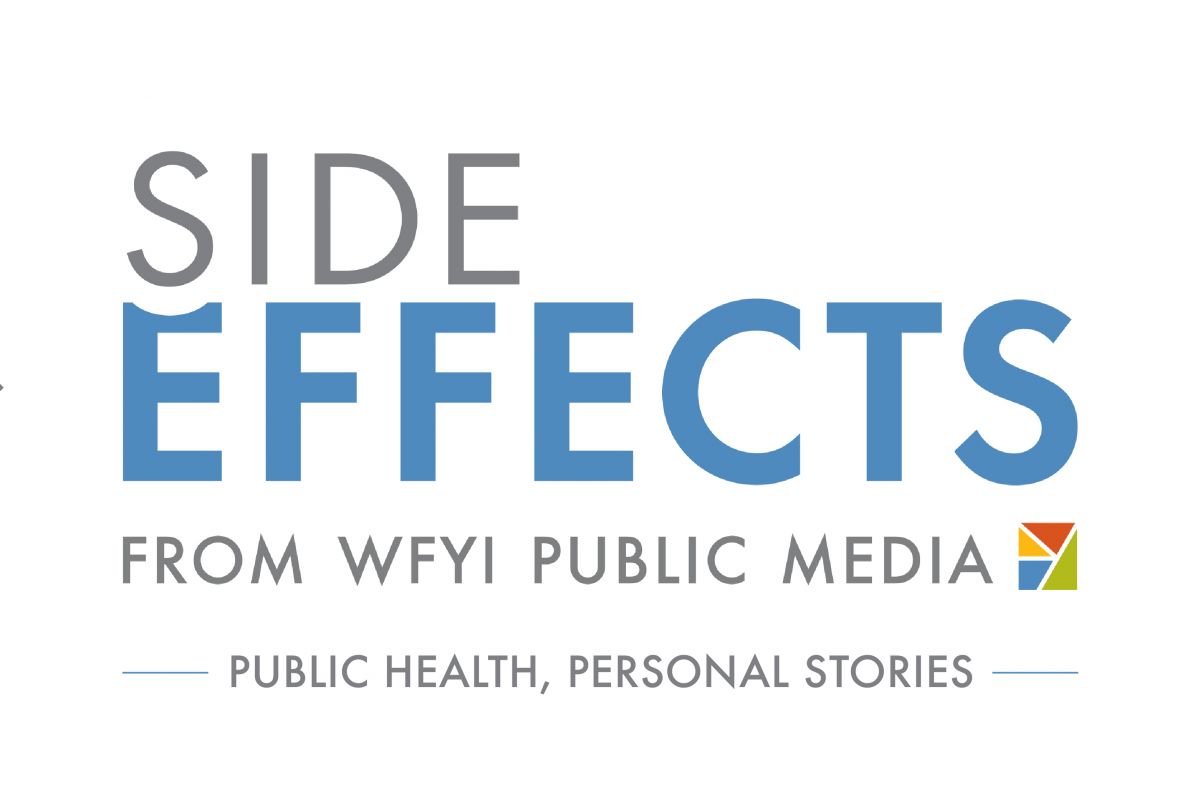Hillary Clinton's path relies on winning traditionally Democratic states and has several potential ways over the top. Donald Trump has a much narrower path — he has to run the table in toss-up states and break through in a state that currently leans toward Clinton.
Here are seven ways Election Day could play out:

1. The Blue Wall holds: There are 18 states, plus Washington, D.C., that have gone for Democrats in each of the past six presidential elections. Those add up to 242 electoral votes. Republicans start with a lower baseline of 180 electoral votes, the product of 22 states that have gone Republican in the past four presidential elections. Additional states leaning Democratic this year are: Colorado (9 electoral votes), New Mexico (5), Nevada (6) and Virginia (13). Take away the one electoral vote in Maine (that's currently a toss-up), and that gets Clinton to 274. That's already above the 270 electoral votes needed to be president. That means she can win without Florida, Ohio, North Carolina, Iowa or New Hampshire. It's amazing that that's possible, but it is because of how demography has changed the map.
2. The Blue Wall cracks but is patched: If cracks emerge in the Blue Wall, all bets are off. One potentially wobbly cinder block is Michigan (16), though the Clinton campaign is confident the state will hold despite seeing a narrower lead there in this campaign than the double-digit ones Barack Obama was able to pull off twice. President Obama has been dispatched to try to turn out black voters to lock down the state, which has no early in-person voting. Just about all voters there and in Pennsylvania and New Hampshire are day-of voters, which is why the Clinton campaign has dedicated so much closing time there, as opposed to other states that are seeing record early voting, such as Nevada and Florida. If Clinton were to lose Michigan (or Pennsylvania or Wisconsin or Minnesota — all places the Clinton campaign is confident of), she'd have to look elsewhere to get over the top. Clinton would have to win at least one of the toss-ups, or a state leaning toward Trump.
3. The Blue Wall holds and adds bricks: Clinton could hold the Blue Wall and add to it with places like Florida (29), North Carolina (15) and New Hampshire (4). It's very possible she wins all three. Early voting has shown a surge in Latino voters in Florida, which could be good news for Clinton. But it's still a 50-50 state in public polling. Because of Latino voters, watch Arizona (11). It's 30 percent Latino, but Latinos made up only 18 percent of the electorate in 2012. There's also always the chance Ohio (18) — where Clinton and surrogates, including Jay Z and Beyoncé, have campaigned recently — could go for the Democrat. It's been within the polling margin of error, though Trump seems to have a slight edge. Iowa (6) is less likely, even though Obama won it twice. But if Clinton pulls off a handful of these states, and if you give Ohio, Iowa and Arizona to Trump, she still runs up the score — even with the possibility of a fairly narrow popular-vote margin.
4. Clinton wins North Carolina, the "Roadblock": A very early state to watch that could give a clue as to what will happen is North Carolina. Polls close at 7:30 p.m. ET, and a Clinton win there would severely hamper Trump's path. The Clinton campaign refers to it as its "Roadblock State." Clinton arguably has as good a chance in North Carolina as in any battleground state, possibly better than Obama when he won it in 2008, the first time it had gone for a Democrat since 1976. That's because demographics have so shifted to include more people from out of state migrating to the Research Triangle area, as well as a growing Hispanic population and consistently strong African-American vote. The Clinton campaign also understands that political unease with the state's GOP establishment, which controls the Legislature and governor's office, has made this somewhat friendlier territory. (Also watch early: Virginia and Georgia, both of which close at 7 p.m. ET.)
5. The Trump Squeaker: For Trump, his path is much narrower. Everything starts for him in Florida. It's a must win — he has no path without its 29 electoral votes. His campaign and the Republican National Committee, which is supplementing his ground game, understand this. But Florida isn't enough. He'd need to win all of the toss-ups, and he'd still be 10 electoral votes short. The next likeliest pickup for Trump is New Hampshire with its nearly all-white population. Its 4 electoral votes would put him 6 short. If Trump could pick up Nevada, then he'd be right at 270, but after early voting, Nevada looks like it's slipping away. (He could always look to Colorado (9), a former Republican state, to make up a deficit, but it has the highest level of college-educated whites in the country outside Washington, D.C. Those Denver suburbs, places like Jefferson and Arapahoe counties, have buoyed Clinton so far. And Colorado also, for the first time, has more registered Democrats than Republicans.)
6. The Trade Winds — Trump's upper Midwest sledgehammer: Unfortunately for Trump, with Nevada trending away from him, the Squeaker path above looks less likely than it did a week or so ago. So he'd need to win a different state leaning Democratic. The most likely area ripe to his anti-trade message where he could turn out disaffected blue-collar white voters is in the Industrial North. So far, Trump's best shot in the region (outside Ohio and Iowa) looks like Michigan. If he breaks off Michigan and wins the states leaning toward him, plus Florida, Ohio, Iowa and North Carolina, he could lose New Hampshire, Nevada, Colorado and Pennsylvania and still break through with 275 electoral votes. (If he lost Iowa in this scenario, it would result in a tie. See below.) If he loses North Carolina, it's a big problem for Trump. He'll have to add Wisconsin, Minnesota or Pennsylvania, in addition to Michigan, to put him over the top.
7. Possible ties!? The likeliest potential tie was looking like the one building off the Squeaker scenario. If he were to win all the toss-ups, pick up New Hampshire and lose one of the electoral votes in Maine or Nebraska, it would be a 269-269 tie. But with Nevada trending away from Trump, there's also the more remote tie scenario outlined in Trade Winds in which Trump wins Michigan but loses Iowa (or maybe even Utah!), and that goes to a tie, too. A tie would go to the House, which is controlled by the Republican Party and would pick the next president. (For more on how ties work and whether the Electoral College is fair, check out NPR's Ron Elving's post on that.)
9(MDEwMDc1MzM3MDEzNDczOTA0MDc1MzViMQ001))
 DONATE
DONATE









 Support WFYI. We can't do it without you.
Support WFYI. We can't do it without you.